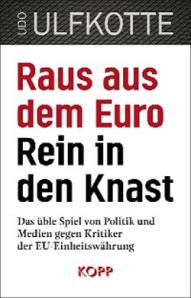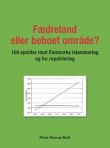Will the welfare be rearranged?
In all the Western welfare-democracies the debate is going on in these years: Is it possible to rearrange the welfare, and if it is possible, is it necessary then to make substantial changes or just larger or smaller adjustments? In all the countries the welfare is financed partly by the insurance principle partly tax-financed. The taxes are mainly income tax and value added taxation. In Norway 1.3 mio. live on public transfers (2005), of which 625,000 are pensioners of age (Norway’s population 4.4 mio.), in Germany the official unemployment (2005) on about 10 p.c. has to be doubled in reality, when the expelled ones without any connection to the insurance arrangement on the German labour market are counted in.
The international competition that has to be called globalisation these years pushes the development further. The developing countries, the Eastern countries and the Far East begin to supply products and labour to much lower prices respectively much lower wages compared with those of the old welfare-democracies.
The official accounted Danish working force that should include the number who supplies their working force on the labour market has to be corrected, because expelled ones – over the years a very varying but always increasing group – from the group of receivers of unemployment funds, and then transferred to social security or early retirement pension without having any other handicaps than those of the community have to be counted in in working force as unemployed:
423,858 receivers of sickness and childbirth benefits can not be distributed between public and saleable emplyees and are not included in table 1
The official number in the working force has been reduced by more than 30,000 in period 2001-2005. The official number outside the working force in the working ages 15-66 years old has increased by more than 50,000 in the same period. The Danish Welfare Commission maintains that there still are 200,000 more in the working force than outside the working force. Here we have to remember that about 1 mio are 18 years old or younger. Only a part of those are included in the figure 1,1000,000 in table 1. Close on 40 p.c. or 440,000 of the 1,1000,000 on public transfers in table 1 are immigrants, descendants of immigrants, naturalized or descendants of naturalized (se below).
To this must be added the question of ageing that has resulted in a skew age distribution with an increasing part of elderly. This contributes further to the support-problem. The Danish model of welfare has ostensible been constructed to equalize the payments between yielder and receiver on lifetime-basic. This will not be possible in future with a continuous smaller working force and a continuously increased number outside the working force in the working ages. It is even further impossible to finance the existing arrangement, when the development of the population continues with:
- A distribution of ages changing to a relatively larger number pensioners of age
- Unsuited immigrants for the labour market
The immigrants receive 40 p. c. of social security, the former Minister Social Security maintained. May 1st 2005 Aarhus Municipality (the second largest city of Denmark), according to www.filtrat.dk : ’58 p. c. of the immigrants on social security etc. are unsuited for work – the politicians shocked’.
Even though the question of ageing among Danish in a distinct minor scale is corresponded by a relatively very large part of children and young-ones among the immigrants (35 p. c. are 25 years old or younger) the central issue in a manageable future will be to finance the consumption of the 1,822,000 receivers of public transfers plus the 850,000 public employed. For now there are a small million who provides and sells the saleable production in Denmark.
In ’Yearbook about immigrants in Denmark 2001 – Balance sheet and development’, Ministry of Interior, 2001, you read officially that 53 p. c. of the male immigrants from non-Western countries are unemployed or outside the working force, for females it is 72 p. c. As the part of pensioners by age among the immigrants still is very small, the mentioned percent-figures will be found again as an absolute number in the figure 1,100,000 in table 1.
If the immigration could be corrected the ageing problem in the Danish community, where the welfare is built on equalization in life-income is making the system tremendous vulnerable, then the time factor would have caught up with the restoration, and it must be concluded that the immigration actually has increased the problem of finances substantially.
Economist, chairman of a think tank and lecturer Hans Kornoe Rasmussen has at several occasions like the EU-Commissioner Vladimir Spidla proposed a many times over increase in the immigration into EU and with it to Denmark. The Danish Welfare Commission asks, ‘Can increased immigration solve the support-problem’? Thereafter the commission supposes for the sake of argument that you could imagine 30,000 extra immigrants from more developed countries every year form now and for ever (a lot more if they bring their families too) added to the present 10,000 a year from developing countries, and that those would work and pay taxes here, then the hypothetical problem of finances would have been solved for the Welfare Commission.
The Danish State-debt has almost been multiplied by 10 (accounted in constant price level) in the period 1960-2001. If the technical development – in spite of the expulsion from labour market – had succeeded to secure enough saleable production to finance a more than doubled public sector inclusive the transfers of the expelled ones in the period 1960-2001 while the ageing of population developed quickly as foreseen from the beginning of the 1970s, and in addition a huge import of immigrants, of which more than the half just contribute to the opposite of the solutions of the problems, in spite of a small share of elderly people among the immigrants, then the international competition still remains. I have to say, this project does not build on any positive knowledge in so far the agenda was as presented to the public.
Differences of structure and competition will been equalized by the market without any state latitude. The main battlefield is the labour market, the social and ecologic systems. The labour market suffers under the wage and social-cost-competition from the employees in the pure zones anywhere, and the ruling national agreements of wage rates and the least-standards of social levels will inevitably be liquidated. The market brushes them aside, the employers use their potentials of threat more and more: they have the possibility to outsource the productions to favourable wage, social, tax and ecology-cheap areas in Europe and outside Europe. About 10,000 jobs in Denmark were outsourced in 2005.
The enterprises invest if their marginal profit determine the production or determines an altered/adjusted production. The difference between the costs and expected revenue (sold quantity multiplied by the price) that these costs demands for unit by unit, is too small to employ 700,000-800,000 unemployed of about 2.9 mio. in the official Danish working force, or 3.3-3.5 mio. of the real fitted for production. If sufficient difference can be realized at lower level of production, the production is realized at that lower level including a lower level of employment, if the best alternative is even worse. It is not when you compare with Danish relations. Passive earnings outside the production or production abroad is preferred. Therefore the purchasing power is transferred to private capital outside the production or invested abroad: Capitalization:
https://danmark.wordpress.com/2006/06/14/when-capital-leave-real-production/
Enterprises do not use price margins to invest, but they use profit-yielding price/cost- margins. The problem is not one dimensional, but at least two or more even multidimensional.
The economic reality is that the producers drive the economy forward, the savings are looked at as the fuel for this process. The private and the public consumption are nothing but maintenance and rubbish.
What the consumers spend does not get the economy going, but it just maintains the apparatus, eventually put it on the back burner. The other thing has never, and will never happen. Sometimes you hear the commentators report that the expenditures spend on private consumption makes up to this or that, and it amounts to a certain percent of the entire demand. We also hear a lot of nonsense concerning the expectations of the consumers – that indicates more about their choise of TV-consumption. To give the reader the impression that the opposite actually is deciding: In 1920s the American private consumption was accounted to about 8.5 p. c. of the producers’ expenditures on factors and producer goods. This means that the total consumption on capital goods to provide, distribute and deliver goods was 12 times larger than all private consumption. Today this relation-ship has turned even more skew.
The problem can certainly not be illustrated just from above and downwards, if by any chance of solution has to be found in the near future. The saleable production has to be increased substantially, or the welfare system has to be canceled. A process that promotes the production is not started by presenting the working force for the businesses. The possibility is to make the productions in this country more competitive. The key to this is a substantial wage and tax-adjustment. The latest four years the problems have just grown bigger, a reduced working force and more to provide for in the working ages (as mentioned above). The problem has just become even more difficult to solve for the last four years. Nevertheless, The Danish Welfare Commission: ‘ it is ambitious to increase the rate employment substantially more than today. The employment is already quite high in Denmark compared with other countries.’
It has to be underlined that some adjustment of the job release scheme concerning the payments or the time or age-limits, eventually its abolition, or an adjustment the age of pension or in the social transfer payments do not solve any problem.
The problem is simply that the cost of the entire tax-financed welfare system are put in taxes and thereby into the monopolized claims of wages. The leads automatically to profitable productions, the earnings of which are the conditions for the welfare system, are made unprofitable.
USA exploited the advantages of the globalisation already in the beginning of the 1980s with outsourcing of quite a few wage-heavy productions. At the same time the Chinese was let to invest in American government bonds for the money they could not real-invest immediately. In this way a part of a safety net was constructed for US-dollar at the same time. EU has broad itself into a defensive position, and chooses protecting duty on varying types of products from low-wage-areas among other China, as the threats against the retained productions appear.
If we shall see the welfare system gradually break down caused by lacking finances, eventually with a last grasp for inflation outside the Euro-zone, and as long as EU has not stopped it, the near future will bring more and more cheap import products to our country, perhaps second-rate goods with prices better matching the social-rates of more and more who will be allocated to social-welfare-transfers to live on, while we look at a partly derailed sector of education and research, where 2 out 3 educated continuing turn their eyes toward jobs in the public sector. Exchange of goods and factors of production included knowledge with the wage-light areas will be topical for some years to come.
The experiment to attract well-qualified workers for example to the IT-line in Denmark does not seem to succeed, most because of the personal income-tax, investigations unveil. This should be proof enough, but in addition there are several more burdens on the businesses and on the every hiring.
We have to conclude, as our own educated people emigrates or turn their eyes toward jobs in the public sector, immigrants for the latest 30 years have definitely turned to the knowledge-light lines, if not towards the public transfers, and our unemployed and expelled in the working ages together with about 7,000 Baltics and Poles (in 2005) cannot fit the everlasting ideology-experiment – the Danish Utopia – that reality soon shall stop the projects that certainly was not introduced caused by any popular claims what so ever, but (also) to serve to the ideological leaders themselves from the beginning.
M. Sc. (Economics) Joern E. Vig, Denmark



























 Indvandrings-
hastigheden voksede
endnu mere i 2013
Indvandrings-
hastigheden voksede
endnu mere i 2013



[…] connections: https://danmark.wordpress.com/2006/06/14/top-and-buttom/ https://danmark.wordpress.com/2006/10/29/danish-account-of-population-a-farce/ We have the total Danish welfare history in Danish too right from the beginning, nothing has been left to casualty: http://nytdanmark.blogspot.com/2006/05/dansk-velfaerds-historie.html Back to reality: http://dissidentpress.wordpress.com/2006/11/16/back-to-reality/ A new monetary system: https://danmark.wordpress.com/2006/06/14/when-capital-leave-real-production/ If you heart is filled use your brain […]
Pingback af The Background - From A Realistic Point Of View « Dissidentpress — 30. november 2006 @ 22:23
[…] Up Re: A fairy tale of 1001 nights – from H C Andersen country Denmark Author: Sonia Date: Nov 29, 2006 14:47 As I see it: The same ideological elite stirve for total control. In doing so it has to have a crowd of subjects by which they may explain their public doings. As the tax-based welfare state grew in size they had to call for almost all the women to go to work too. The main purpose of all this was taxpayments/tax-revenue and nothing else and by this a steadily growing public sector. Then the women stopped giving birth the second perhaps the third child, and with long educations they began to give birth for the first time – if they did – at much higher age. The total result of taxation made a lot Danes unemployed. The high educated women seldom got more than one child if any child at all, and unemployed did not dare to give birth. Result: Too few children to replace the deads from 1981. So from 1983 they began "to import" the problems from all over the world. Before the welfare state 2/3 of all Danes lived in their own houses on one income. Today they have biggest problems to pay the rent without two incomes. For further delopment of the unlimited public need and unlimited public satisfaction – in the brains of ideologists. Ideologists of all kinds are the same: They have a book telling them how the world should have been, and especially how the human being should have been. The book give them the way to tranforme the world and human being to fit into the theory written in the book. The only problem every ideologists has is this: The world and the human beings are something else, much different from prototype from textbook. This fact disturb the mind of the ideologist, and he/she concludes: We just have to get rid of the wrong ones, then we will get the world we aimed for in our theoretical consciousness of which their whole lives are depending of. Shortly spoken: Theory simply has everything for the purpose the goal (in the clouds from where you cannot see and hear the earth)… everything but the one single thing that is needed. (Freely after Soeren Kierkegaard) Don’t ask for the judge, he will decide in end with the help of his unideological but still earthly small helpers. The other judges were appointed by the idelogists anyway. So their jobs are that of marionets. Sonia connections: https://danmark.wordpress.com/2006/06/14/top-and-buttom/ https://danmark.wordpress.com/2006/10/29/danish-account-of-population-a-farce/ https://danmark.wordpress.com/2006/11/02/hvorfor-lyver-de-om-andelen-fremmede-i-holland-sverige-og-danmark/ We have the total Danish welfare history in Danish too right from the beginning, nothing has been left to casualty: http://nytdanmark.blogspot.com/2006/05/dansk-velfaerds-historie.html Back to reality: http://dissidentpress.wordpress.com/2006/11/16/back-to-reality/ If you heart is filled use your brain Michael Laudahn eOpposition wrote: > Found at > http://dendanskeforening.dk/side1-cid-1-aid-1385-mid-1-params-2.html > > Original at > https://danmark.wordpress.com/2006/11/25/liberalen-tabte-internationalen-vandt-med-bedrag/ > > > ‘Liberalists’ lost – ‘internationalists’ (who basically are identic) > won by cheating > > > The Rockwool foundation has now reached the same result which > Velfærdskommissionen furnished a year ago. > > The group of non-western immigrants as a total receives twice the > amount of cash aid and cash-equivalent services, than this same group > as a total pays into the cash register through taxes and duties. Put > differently, non-western immigrants charge the public sector – which > gets its spending power from economy and tax-payers – on average twice > as much as they contribute. > > That’s the way the development has gone since 1984, the year we got the > famous ’83 foreigners law, which basically opened the country for free > access and stay within its borders, while the foreigners’ legal matters > were treated applying appeal after appeal, along with a reversed onus > of proof and a worldwide jurisdiction. > > The present government has the absolute majority, included the party > that tolerates it; but nothing has happened. As the country’s best > brains had warned right from the start how the result would look like, > one imagined that they (tn: the government) would find to reason, after > all. > > However, this is as illusory as the idea that the worst ideologists > would convert to the world of reality. > > The treason committed against the country is so heavy and the situation > so comfortable for the worst (tn: the foreigners), that this > development may continue until the total deletion of the danes. > > The balance equation from the country of the blissful (theory): influx > of non-western migrants = growth of the number of non-westerners, > covered by naturalisation documents = number of fled ethnic danes. > > According to the balance equation from the country of the blissful > (practice), the exchange of the country’s rightful citizens procedes as > planned, quietly and calmly, even unnoticeably. Of course, this costs > enormous amounts and expensive standstill, which has been determined > through calculations by Rockwool and the former Velfærdskommission. > But just imagine how good the country will be once the population has > totally been exchanged against non-westerners. > > On the way there, there sure was plenty of noise at the warning > signals, and the economy didn’t get the manpower they allegedly were > short of. The danes were good for nothing, and public servants steered > – along with the ‘internationalists’ of the redeemer industry (tn: > Oxfam & co) – the influx of new foreign clients into the country, whom > the public officials in charge were supposed to practice their art on > and earn their living with. > > Behold, this is a true fairy tale. And they all lived happily ever > after. > > > > > > — > > Anglo-saxon limitations to free speech: > > ‘… things like child pornography, false statements that result in > demonstrable harm (defamation), the exposure of national security > information, commercial fraud, and the proverbial shouting of "Fire!" > in a crowded theater’ – nothing else. > > http://www.weeklystandard.com/Content/Public/Articles/000/000/012/055sbhvq.asp no comments diggit! del.icio.us! reddit! […]
Pingback af Re: A fairy tale of 1001 nights - from H C Andersen country Denmark — 14. december 2006 @ 17:29
[…] https://danmark.wordpress.com/2006/06/14/top-and-buttom/ https://danmark.wordpress.com/2006/10/29/danish-account-of-population-a-farce/ https://danmark.wordpress.com/2006/11/02/hvorfor-lyver-de-om-andelen-fremmede-i-holland-sverige-og-danmark/ We have the total Danish welfare history in Danish too right from the beginning, nothing has been left to casualty: http://nytdanmark.blogspot.com/2006/05/dansk-velfaerds-historie.htmlBack to reality: http://dissidentpress.wordpress.com/2006/11/16/back-to-reality/ If you heart is filled use your brain […]
Pingback af Danmark — 15. december 2006 @ 11:27
[…] https://danmark.wordpress.com/2006/06/14/top-and-buttom/ […]
Pingback af Ideology always mistakes « Dissidentpress — 15. december 2006 @ 12:02
[…] One single: Checkmate: https://danmark.wordpress.com/2006/06/14/top-and-buttom/ […]
Pingback af USAtoday.com runs series of Denmark-articles « Danmark — 10. marts 2007 @ 16:50
[…] One single: Checkmate: https://danmark.wordpress.com/2006/06/14/top-and-buttom/ […]
Pingback af USAtoday.com runs series of Denmark-articles « Dissidentpress — 10. marts 2007 @ 16:54
[…] of ages to change, if you base this model of more than 1-2 generations (the selfishness in the ideological top has been described). It is easy in the model of life, but it is impossible in reality. All […]
Pingback af A last must choose between good and bad « Danmark — 28. oktober 2007 @ 09:12
[…] of ages to change, if you base this model of more than 1-2 generations (the selfishness in the ideological top has been […]
Pingback af Ideology replaces reality « Dissidentpress — 28. oktober 2007 @ 09:31
[…] change, if you base your model of more than 1-2 generations. The selfishness in the ideological top https://danmark.wordpress.com/2006/06/14/top-and-buttom/ has been described, and don’t ever believe this selfishness range at a lower priority than […]
Pingback af Ideology has replaced reality « Dissidentpress — 28. november 2007 @ 11:02
[…] change, if you base your model of more than 1-2 generations. The selfishness in the ideological top https://danmark.wordpress.com/2006/06/14/top-and-buttom/ has been described, and don’t ever believe this selfishness range at a lower priority than […]
Pingback af Ideology has replaced Reality « Danmark — 28. november 2007 @ 11:26
[…] View […]
Pingback af All Posts on http://Danmark.Wordpress.com « Danmark — 17. marts 2009 @ 23:59
[…] In the period 1960-2001: Tax-payments more than doubled, and the state debt was multiplied 9.7 times accounted in fixed prices, the number of helpers doubled while the number that needed help was multiplied with three, and the original population decreased every year from 1968. Documentation: https://danmark.wordpress.com/2006/06/14/top-and-buttom/ […]
Pingback af Real Welfare, real Globalization | Danmark — 15. september 2013 @ 11:37